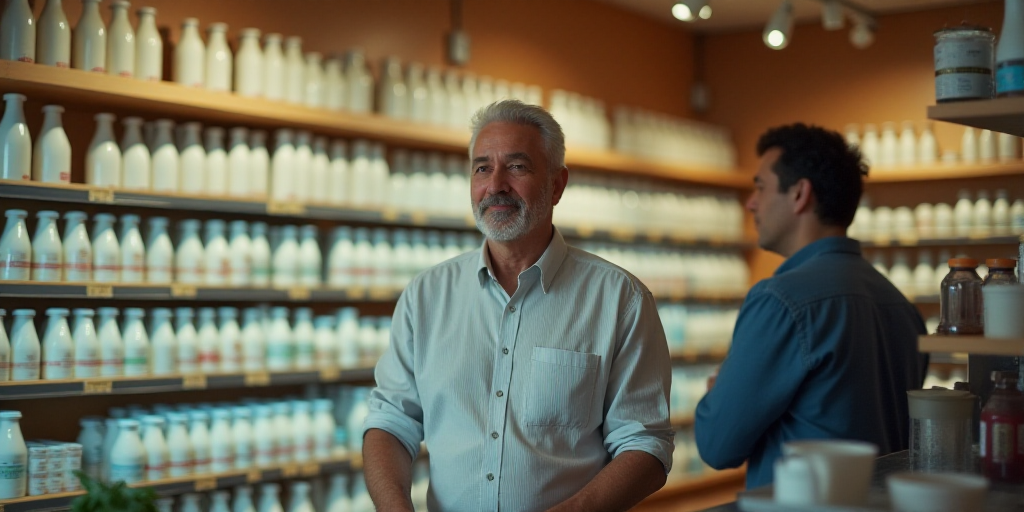Current State of Dairy Production in Mexico
Mexico’s dairy sector currently produces over 19,400 million liters annually, covering only 70% of the national demand. This shortfall forces Mexico to import 5,820 million liters each year, primarily from the United States, according to data from the National Chamber of Dairy Industry (Canilec).
Ricardo Villavicencio and Canilec’s Perspective
Ricardo Villavicencio, president of Canilec, highlighted the southeast’s potential for dairy production during the World Milk Day celebration. The region boasts favorable water availability and fertile lands in states like Campeche, Tabasco, and Yucatán. However, these areas currently contribute minimally to the national production.
Government Investments and Initiatives
The Mexican government is investing heavily in the southeast, as evidenced by the new pasteurizing plant in Campeche. Announced on April 27 by President Claudia Sheinbaum, the plant will be operational by November and has received a 140 million peso investment as part of the Milk Autosufficiency Plan.
With a daily capacity of 100,000 liters of milk, the plant aims to supply the region and establish a foundation for dairy development in the southeast, including small local producers. Villavicencio expressed confidence that the planned 1,500 million liters additional production by 2030 will be achieved through coordinated efforts among the government, producers, and industry.
Private Sector Investments
MIYM announced a 1,100 million peso investment for constructing a new dairy production plant in Rincón de Romos, Aguascalientes. The facility will include a pasteurizer and cheese-making operation, following the lead of larger companies to promote regional development.
Aguascalientes, one of the top 10 states accounting for 90% of national production, is taking steps to add value to the dairy chain. These industrial developments complement primary production and support Plan Mexico’s objectives by creating more jobs and improving producer profitability.
Regional Disparities in Dairy Production
Chihuahua, with the capacity to process 3,000 million liters annually, only produces 1,500 million. This significant gap between potential and actual production highlights the challenge of chain fragmentation in the sector.
Approximately 95% of dairy producers are small-scale, milking cows under the sun without proper shelters or cold chain infrastructure. This lack of financing and technology puts them at a disadvantage compared to formal dairy industries.
Northeastern states also face severe drought affecting the region for four years, with dams operating at only 18-20% capacity. Sustainability is another critical priority for the dairy sector.
Key Questions and Answers
- What is the current state of dairy production in Mexico? Mexico’s dairy sector produces 19,400 million liters annually but only covers 70% of the national demand, forcing imports of 5,820 million liters each year.
- How is the southeast region contributing to dairy production? The southeast has favorable water availability and fertile lands in states like Campeche, Tabasco, and Yucatán. However, these areas currently contribute minimally to the national production.
- What government initiatives are being implemented? The Mexican government is investing in the southeast, with a new pasteurizing plant in Campeche and plans for additional 1,500 million liters production by 2030.
- What role do private sector investments play? Private companies like MIYM are constructing new dairy production plants, adding value to the dairy chain and supporting regional development.
- What challenges does the dairy sector face? Small-scale producers lack financing and technology, while severe drought affects northeastern states. Sustainability is another critical priority for the sector.






